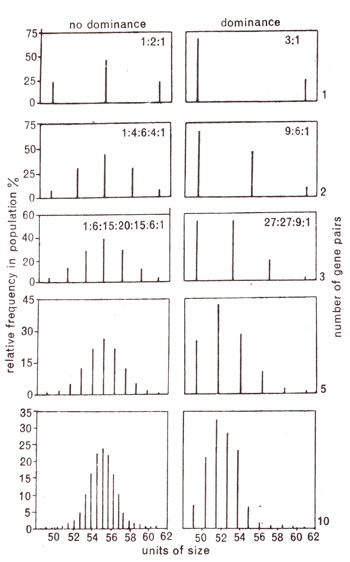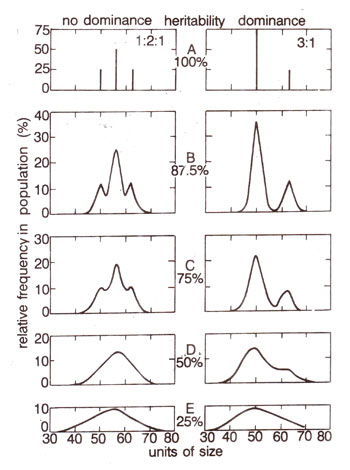Genetics / Quantitative Inheritance
Effect of degree of dominance, number of genes and environment
We have noticed in the above discussion, that classification of individuals, segregating for a quantitative trait in F
2 generation, into discrete classes is not always possible. This is attributed to the following three reasons.
-
Degree of dominance : heterozygote does not always resemble one of the parents.
-
Number of genes : a large number of genes forming a polygenic system may be involved in controlling a trait.
-
Environment: a character may be partly under an environmental control, which is also described as low heritability.
Theoretical distributions of F
2 populations derived from F
1 individuals heterozygous for 1, 2, 3, 6 and 10 genes exhibiting complete dominance and incomplete dominance are shown in Figure 4.6 and suggest that in both cases, the distribution gradually becomes continuous with increase in number of genes. This distribution will be further modified towards continuity due to environmental effect leading to what we call as reduced heritability (heritability = genetic variance/ phenotypic variance). This is illustrated by the theoretical expectations derived for different levels of environmental effects and shown in Figure 4.7.

Fig. 4.6. Expected frequency distribution in F2 generation derived from a cross between parents differing by 1, 2, 3, 6 and 10 genes assuming no dominance or incomplete dominance (left) and complete dominance (right).

Fig. 4.7. Expected frequency distribution in F2 generation derived from a cross differing for a single gene, assuming different levels of heritability (100%, 87.5%, 75%, 50%, 25%), under conditions of no dominance (left) and complete dominance (right).
Support our developers

More in this section






